Trending Prospects (1/14/2011) Darius Morris, Marshon Brooks, Delvon Johnson, Matthew Bryan-Amaning
Trending Prospects (1/6/2011) Justin Harper, Nikola Vucevic, Andrew Goudelock, Trevor Mbakwe
Trending Prospects (12/30/2010) Keith Benson, Tristan Thompson, Klay Thompson, Quincy Acy
Trending Prospects (12/23/2010) Khris Middleton, Markieff Morris, Keith Clanton, Orlando Johnson
Trending Prospects (12/16/2010) Scotty Hopson, Rick Jackson, Festus Ezeli, Brad Wanamaker
Trending Prospects (12/9/2010) Brandon Knight, Demetri McCamey, David Lighty, Justin Holiday
Trending Prospects (12/2/2010) Terrence Jones, Reggie Jackson, Charles Jenkins, Steven Gray
Tobias Harris, 6-8, Freshman, SF/PF, Tennessee
15.6 points, 7.4 rebounds, 1.6 assists, 1.9 turnovers, .9 steals, 1.2 blocks, 46% FG, 74% FT, 32% 3P
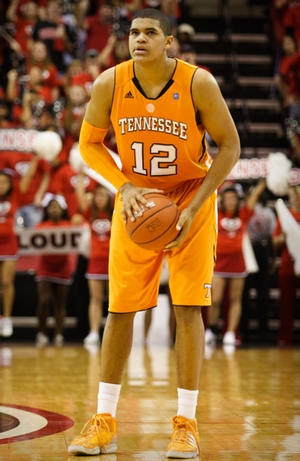
Jonathan Givony
One of the most productive members of this year's freshman class, Tobias Harris has played a key role for Tennessee from the moment he arrived on campus. And while the Volunteers have been a roller coaster rider of a team all season, Harris has been a model of consistency, scoring between 15-21 points in virtually every game he's participated in, despite being one of the youngest players in college basketball.
The biggest intrigue around Harris stems around his versatility, as he's a solidly built 6-8 power forward with a very good skill-set and an excellent feel for the game. Harris is a tremendous mismatch threat at the college level as he has the ball-handling skills to take his man off the dribble from the perimeter, but is still big and strong enough to make his presence felt inside the paint on both ends of the floor. He's also a very good passer who moves off the ball well and shows great maturity and unselfishness operating in the half-court.
Harris has the freedom to grab a rebound and go coast to coast on his own, showing really nice body control handling the ball fluidly in the open floor, and even being able to change directions on the fly. Tennessee takes advantage of his unique skill-set frequently, allowing Harris to score over 20 points per-40 and get to the free throw line at a strong rate.
Harris is able to knock down shots from the perimeter, but is nowhere near consistent enough with this part of his game just yet. He's knocked down just 16 of the 57 jumpers (28%) he's attempted on the season thus far, showing a slow, flat-footed release, and converts under one 3-pointer game. To reach his full potential Harris will need to become much more proficient in this area, as it's an absolute key to the way he'll have to operate in the NBA.
As much of a mismatch as Harris is for his size, he's still figuring out the nuances of creating high-percentage shots in the half-court. He doesn't show much of a post-game, something that would benefit him greatly when teams elect to use smaller players to guard him on the perimeter. When creating his own shot, he struggles at times to get all the way to the basket, shying away from contact and being forced to finish plays with a floater rather than elevating over his opponents.
Harris is not an exceptionally explosive athlete, especially in traffic, which is one of the reasons he's shooting under 50% from inside the arc, despite his very nice touch around the rim. When defenders rotate into the paint, he doesn't have the ability to pull up for a jumper in the mid-range area at this stage, as he shows little to no elevation on his shot.
None of these issues are particularly unique for an 18-year old, and considering his strong work ethic and excellent feel for the game, it's likely that Harris will continue to gradually improve on the weaker parts of his game.
Defensively, Harris has nice tools to work with at 6-8 with a strong frame and a solid wingspan. He puts a good effort in on this end of the floor, has nice anticipation skills and is a smart and fundamentally sound player to match.
One area of concern NBA teams might have revolves around the position Harris is expected to defend at the next level. He shows average lateral quickness, which could prevent him from guarding some of the more athletic slashers he could run into at the small forward position, but is slightly undersized for a power forward at 6-8. Thankfully for Harris, that inch or two he may or not be missing is becoming less of an issue amongst NBA teams, and considering all the other things he brings to the table, they'll probably be able to live with that. It will be important for him to continue to put a good effort in on the glassan area he's just OK in right now.
Harris is very much an acquired taste, the type of player who is unlikely to blow GMs away with his upside or athleticism, but who coaches usually fall in love with. He's probably not a great fit in just any NBA system, as he is somewhat of a tweener, but should be able to carve out a long and successful career if he lands in the right spot and continues to improve on his weaknesses.
Travis Leslie, 6'4, Junior, Small Forward, Georgia
14.5 points, 7.4 rebounds, 2.5 assists, 1.9 turnovers, 1.4 Steals, 51.6% FG, 16.7% 3P, 83.1% FT
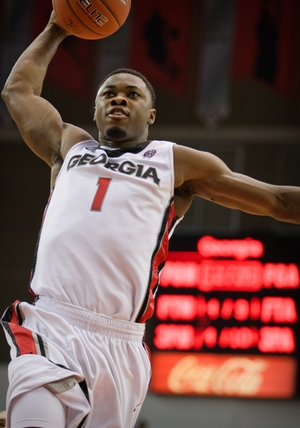
Matt Williams
When we last checked in on Travis Leslie back in the preseason, we had lofty expectations for the rising junior. Teaming with Trey Thompkins to form a potent combination in Georgia's frontcourt, Leslie seemed ready to take the next step as a NBA prospect. Though he's helped Georgia to a 13-4 record, we have yet to see the gigantic leap forward that would propel his stock up draft boards and solidify his candidacy for the 2011 draft.
One of the more unique prospects around, Travis Leslie could easily be called the best athlete in college basketball. He plays way above the rim whenever he has a chance to and does so effortlessly, despite standing just 6'4. Extremely strong and possessing elite explosiveness, Leslie is still the same largely raw forward in an undersized two's body that we wrote about last season.
Able to play significantly bigger than his 6'4 height, Leslie's most notable development this season lies in the way he's able to score inside the arc. Often struggling to get all the way to the rim as freshman, but doing a much better job going up strong around the basket last season, the Georgia native has developed an improved comfort level and slightly better touch in the paint this season. According to Synergy Sports Technology, he's shooting 58% in finishing situations this season. Accounting for more than half of his shots both this and last season, that's a significant improvement over the 50% he shot last year. At this point, he's backing up his one or two highlight reel dunks every game with rock solid efficiency, even if he's not getting to the free throw line quite as often as he did in the past.
Away from the rim, Leslie is largely the same player that he was last season. He's seeing fewer touches in transition this season and more in spot-up situations, which has limited his productivity to some degree. However, he is still extremely efficient in catch and finish situations resulting from cuts and offensive rebounds, which account for a large portion of his offense. His ball-handling and shot-creating abilities both appear slightly improved, but remain limited. He is able to rely on his lightning quick first step at this level to get his shot off, but his perimeter shooting has not taken a sizeable step forward as evidenced by his 16.7% shooting from three point range on a little over one attempt per-game.
Leslie is capable of knocking down some shots off the dribble from 17 feet, and has shown some flashes of potential pulling up driving left this season, but lacks ideal polish away from the rim. His mechanics seem a bit more consistent than they did in the past, and that has paid dividends from the foul line (83%), but the results just haven't been there in catch and shoot situations, where he's shooting just 24.2%. Much like we noted in our last report, if Leslie can consistently knock down spot up jump shots from the wings, he instantly becomes an extremely intriguing prospect.
Defensively, Leslie has all the tools to be successful on the NBA level, even if he is undersized. He shows active hands and solid lateral quickness, making him quite a pest in the college game. At this juncture, he needs to gain experience guarding the perimeter full time, as he still spends some time defending power forwards depending on who UGA is matching up with. With additional coaching, Leslie should become a very solid individual and team defender, only adding to his merits as a terrific rebounder for his size on both ends of the court.
A hard worker with a unique physical profile, Leslie remains a very likely future NBA player. If he improves his perimeter skill level and guard play, he's going to have the full attention of NBA decision-makers. It is really that simple for the young forward. He has the tools to be a NBA contributor down the road, but the timing of his development as a shooter will play a key role in how soon he takes that step.
Malcolm Lee, 6-5, Junior, Point Guard/Shooting Guard, UCLA
12.4 points, 3.1 rebounds, 1.7 assists, 1.6 turnovers, .5 steals, 43% FG, 76% FT, 31%3P
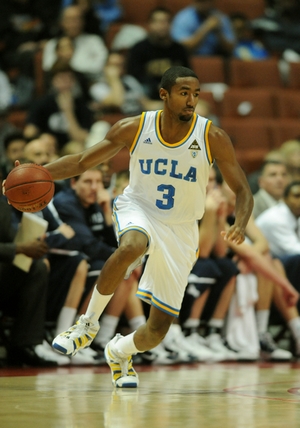
Walker Beeken
Our last wrote about UCLA's Malcolm Lee came almost a year ago, as he was adjusting to a featured role in UCLA's offense as the team's primary ball-handler and creator. With the addition of junior college transfer Lazeric Jones to man the point guard slot, Lee has made the transition to full-time shooting guard this season as a junior, and so far he's had mixed results.
Standing at 6'5 with nice length and a physique that has improved over his career at UCLA, Lee certainly passes the eye test for an NBA combo guard prospect. Unfortunately his skill set and feel for game have yet to catch up with his physical tools.
While he's spent time playing the point and now the two spot, it's still unclear what type of role offensively Lee is most comfortable in, and best suits his game for the future. Former Bruins Russell Westbrook and Jrue Holiday both also had some trouble adjusting to Ben Howland's methodical offensive system, and spent the majority of their time playing shooting guard. Their NBA success obviously bodes well for Lee, and has likely had some scouts giving him the benefit of the doubt for his lack of production, but at some point he's going to have to give them more reasons to take a chance on him.
When taking a closer look at Lee's role this season, it's clear from that he's been spending more time off the ball. His assist numbers are down, but his turnover numbers have decreased at a similar rate as well, as he's spending more time spotting up on the wing and less time creating offense with the ball in his hands.
Lee is still far from a shooting specialist, but he has shown flashes of having the potential to be an adequate perimeter shooter at the NBA level, and has definitely made some nice strides in this part of his game. He's shooting more 3-pointers this season and shooting 31% from behind the arc, which is up from the poor 25% he shot as a sophomore, but his mechanics look much better than when we wrote about him before.
Shot selection is probably what's hurting him the most as a shooter this season. He's shooting a solid 40% on catch and shoot opportunities, which is way up from the dismal 23% he shot last year. He's also converting a terrible 17% on off the dribble jumpers though, mainly because he's taking shots that he has no business shooting.
Lee's mid-range game is still an area that improvement as well. He's shown the ability to create space using his size and athletic ability, but he doesn't have the feel to be a consistent threat. And while his smooth first step and physical abilities help him get to the basket as a slasher, he still doesn't finish at a high rate due to a lack of strength and craftiness and occasionally being out of control.
Lee is clearly at his best when he can get out in transition and utilize his athleticism in the open court, where he has the ability to lead the break or fill the lanes as a finisher. He seems much more comfortable handling the ball in the open court, and he shows better court vision than he does when he's handling the ball in traffic. He also finishes more effectively in transition when he's more under control and can rely more on his speed and elevation at the rim. With the NBA being a more wide open style than the college game, that certainly plays more to Lee's strengths.
On the defensive end, as we've mentioned before, Lee has all of the tools to excel at the NBA level with his combination of size, length, energy, athletic ability, and experience under a defensive-minded coach in Ben Howland. The fact that he projects to be able to defend both guard spots is an added bonus to his defensive potential at the next level.
Looking forward, it's clear that Lee is a talented player with some potential to build on, as he's still only 20 years old and possesses all of the physical attributes that scouts covet. His undefined position and role, and lack production in his third season at UCLA are definitely concerns that scouts will have to consider though.
His experiment at the point didn't lead to much success last year, and he doesn't seem to have the instincts or decision making skills to ever be a pure point guard. And while he's become more efficient on catch-and-shoot opportunities, he still doesn't project to be a big-time shooter or scorer on the wing.
Lee's defensive potential is probably the area where he stacks up best as an NBA prospect at this stage. In order to give himself the best chance in the future, Lee should embrace his strength as a defensive stopper who can cover either guard position. If he can do that while he continues to improve his perimeter shooting and adds polish to his slashing and overall floor game, Lee will earns looks from NBA teams looking to fill that void on their roster.
Jordan Williams, 6-10, Sophomore, Center, Maryland
18.1 points, 12.2 rebounds, .4 assists, 1.2 turnovers, 1.4 blocks, 56% FG, 52% FT
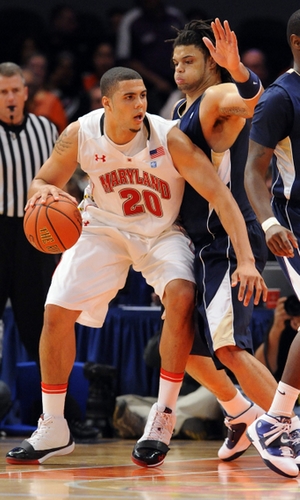
Derek Bodner
After a strong finish to his freshman campaign that culminated in being named the runner up in the ACC rookie of the year voting, Jordan Williams has had to should a much heavier offensive load for Maryland. With the graduation of Maryland's top three scorers from a year ago, Williams has gone from an offensive role player who got most of his points off offensive rebounds, transition opportunities and simple catch and finish opportunities to the focal point of the Maryland offense.
Williams has had success in his new role, going from 14.7 points per-40 minutes pace adjusted to his freshman year to 20.8 this year, while increasing his efficiency. Despite the progress, Williams has some more work to do to overcome the athletic disadvantage he'll face in the NBA.
Williams still operates almost exclusively in the paint offensively, getting the vast majority of his half-court offense from offensive rebounds, cuts, and post-ups. He's a very active player with broad shoulders, good length, good touch around the rim, and has made significant strides with his conditioning compared with where he was last year, although he still has some work to be done in that regard. He's deceptively quick in transition, being more agile in the open court than you would expect someone of his size and overall athleticism.
The biggest strides Williams has made have been in his post game, doing a better job of using his strength to establish good post position down low, showing a soft touch with his right hand, and displaying improved footwork on the blocks. According to Synergy Sports Technology, Williams has increased the amount of touches he gets on the block, while increasing his efficiency doing so.
Despite making strides in his post-game, Williams still has a considerable amount of question marks on how well, if at all, that will translate to the next level when he faces the length of NBA frontcourts, when he won't have a decided strength advantage over the man guarding him. He's often times slow and predictable with his moves, which when combined with his lack of vertical explosion leads to difficulty getting his shot off at times. While his footwork has improved, he still lacks a go-to move and has little diversity when going over his right shoulder, showing a weak left hand in these situations and more often than not settling for a difficult fade away jump shot.
Moving well off the ball, Williams has very good hands, showing an ability to catch most passes down low and get his shot off quickly, doing a good job of keeping the ball high. Williams has shown almost nothing in terms of a mid-range jumper, a skill set he's probably going to need if he hopes to stick with an NBA team. His form looks solid, and with enough repetition it may in fact become an option for him down the line, but as is evidenced by his free throw percentage (51.6%), Williams has a lot of work ahead of him before becoming a reliable threat from the perimeter.
Another area where Williams could stand to improve is as a passer, particularly doing a better job of recognizing the double teams quicker, as often times he's unable to use the considerable attention he generates in the post to his teams benefit. He ranks amongst the five worst passers amongst all prospects in our database, highlighting his struggles in this area. That being said, Maryland's overall lack of reliable shooting from the perimeter hurts Williams in this regard, which makes it hard to accurately gauge his improvement in this facet of the game.
On the defensive side of the ball, Williams does a solid job using his size and strength when engaged in the post, although he suffers at times from waiting too long to deny post position before his man gets the ball. He has decent enough fundamentals showing on the pick and roll, but lacks the foot speed to recover, a problem that looks to be a serious one when trying to project his defense against the face-up big men he would encounter in the NBA. The same lateral mobility issues creep up when defending a good isolation big. While Williams has solid timing and good length, and thus will get the occasional block, he isn't quick enough or explosive enough off his feet to project to being a consistent shot blocking threat in the NBA. Gary Williams' largely man to man defensive scheme gives us a solid look at the difficulties Williams will have when trying to defend NBA big men.
The one skill that Williams should be able to hang his hat on is his rebounding, and it's a big one at that. Williams is an outstanding rebounder on both sides of the floor, ranking 7th in our database in rebounds per-40 minutes pace adjusted. He's active on the offensive glass, constantly moving to gain position. On the defensive side of the ball, despite not having the quickness or reaction time to cover a lot of space, he does a good job boxing out and uses his good hands to clean up what's available to him. Williams is on pace to have one of the best rebounding seasons by a sophomore in ACC history, and should be able to translate that skill to the professional level.
Williams has made great strides in productivity with an entire college offense built around him, and has placed himself on the radar for being an NBA prospect. That being said, he still has a way to go to diversify his offensive game to show that he can play a similar role in the league. Displaying success shooting the ball, developing a pick and roll game, and making better use of his left hand in the post would go a long way towards quelling the concerns of his current offensive skills translating.
With the ACC portion of the schedule now underway, how well Williams performs against some of the better defensive teams, and some NBA-level defensive big men, will be telling when evaluating his status as a legitimate prospect. The early returns have been promising, as he's outplayed significantly higher rated prospects in Villanova's Mouphtaou Yarou and Duke's Mason Plumlee. How well he does the rest of the way will be telling of how far he's come as an NBA prospect, and perhaps on how far he still has to go before erasing all of his concerns.













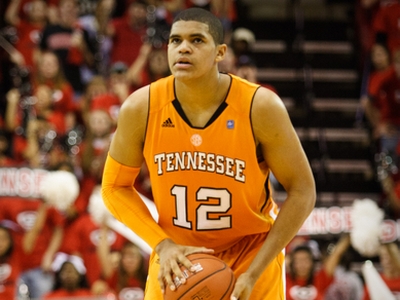
















































Comments